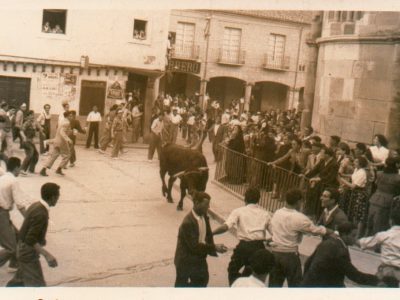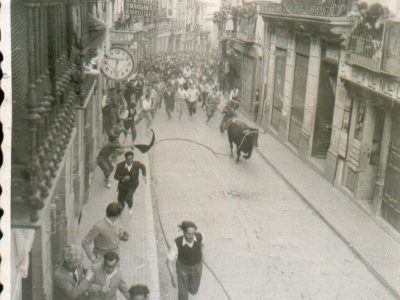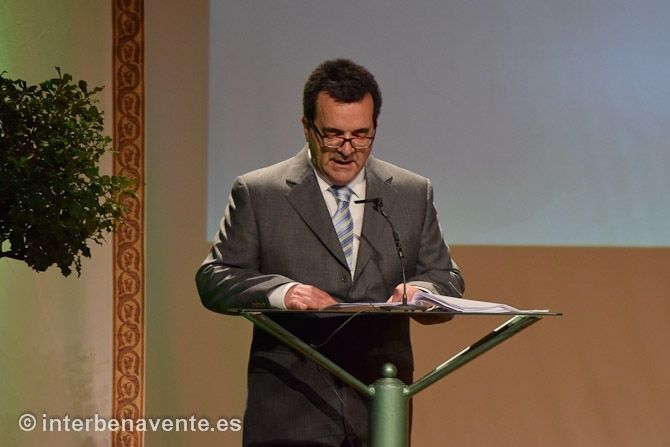A different way of approaching the world of bullfighting in general and of bullfighting popular, and in our case, particularly to the fate of the so-called bull rope, ensogados, tape or enmaromados is without doubt the photography. The photos generally speak for themselves and allow us to look back, providing us the opportunity and the excitement of time travel. They are mirrors of the memory that is confined in a cardboard small fragments of our lives. These images, sometimes already yellowed by the passage of the years, we offer the opportunity to poke at other times of the history. Its value and interest as a document and a graphic testimony enables us to contemplate the change of our lives, because in a certain way, are the fragments of memory that show us “as were”.
There is so much still to learn about the existence of the photography in our city of the “Earls Dukes”, and that this art has given of himself from the british William Clifford in 1854 made precisely at Benavente the first photographs carried out in the province of Zamora. Among them there is one that shows us the grandeur that was at any other time in his Castle of la Mota, who was in another time palacio de Pimentel. The tracking photo represents a remarkable effort of collection due to the dispersion of the material and sources of information. That is why it is like to acknowledge the initiatives that have been undertaken in this field during the past few years to recover the heritage local graphic, the fruit of which have been some publications. Other contributions of interest directly related to the world of photography in the area benaventano are some miscellaneous photographic compiled and edited by various authors, on the issue of local heritage. In particular on the subject of our most deeply rooted celebration are reviewing the photo collection of Alejandro Flórez on “Photographs of the Feast of the Bull Enmaromado”. The publication of this album is one more link in the knowledge of the history of the local photography, crucial to understand our identity as a people, as a human community.
En este proceso de búsqueda y recopilación localizamos también diversas noticias y referencias sobre los fotógrafos locales que insertaban sus reclamos publicitarios en las páginas de anuncios de los periódicos y semanarios benaventanos como: La Sociedad Electrofotográfica Madrileña, López y Cienfuegos Fotógrafos, entre 1896-1898 o posteriormente, a partir de la década de 1930, Foto Testera, entre otros muchos. Sería prolijo reflejar aquí la densa relación de fotógrafos de toda época y condición que arribaron periódicamente o se asentaron en Benavente. Baste recordar a algunos de los profesionales que marcaron época, así en el periodo de 1920-1930 cabe citar a algunos como Roque Montes Martínez, Eusebio Iglesias Andrés, Julio Spitcer Salgado, Francisco de Inés Díaz, Emiliano Manzano de la Cruz, Pablo Testera San Martín (quien mantendría abierto su estudio durante varias décadas posteriores). En los años 40 y 50 encontramos a José Villarejo Burgo, Manuel Virosta López, José Rodríguez Alonso y Foto Donci (David Cidón), etc. En los años 60 y 70, desarrollaron su labor profesional en Benavente: Saturnino Ferrero Peral, Ángel García Esteban, Foto Rodrigo, Foto Estudio Mancebo, Foto Jatas, Foto Jesús, Foto Rápido, Foto Peleas (Luis Esteban), Foto Pablo González y más recientemente durante las últimas décadas: Foto Claudio de la Cal, Foto Philmar, Foto Lomi, Foto Leonardo, Foto Pablo (hijo), Foto Juanjo, Foto Dani, Foto San Cristóbal, etc.
Also professional photographers with study in other locations are moved from time to time to cover the celebration: Photo Caves, Photo Trabanca, Photo Charros (Salamanca), Photo by Vega (of Aspariegos, Zamora), Photo Jesus Saldaña, etc, we must Also make mention of those photographers who settled in the village or who came occasionally to install their studies the street.
The work great to collect and recover a good part of the graphic material existing on our more well-known and popular party, as well as the initiative is put at the disposal of the reader and the general public is sincerely appreciated.


The photographs that captured and reproduced the race of the Bull Enmaromado, for its subject us to the contemplation of images that constitute a vision of hindsight and historical of the future of the party during the past seventy or eighty years. The images on our most-loved party were made largely by local photographers and tourists who wanted to capture the best instant dl celebration, perched in places, sometimes far-fetched sometimes at the risk of their own lives, to try to approach too the running to get the best shots. These prints graphics incite an already great interest by showing us a show plastic and visual, full of strength and power of attraction as it is the celebration of traditional race on the running through the streets and squares of Benavente. They are a document illustrating on the evolution of the party during the past few decades, but they also gather in a great value as graphic testimony, and without doubt also undisputed ethnographic interest. They also imply an exercise of reflection on our roots as a human community, of our culture as a people we are and where we belong. Allow us to also appreciate comparatively, the evolution and the dynamics of the festival, the running form and make the race, carrying the rope and arrange in the rings are located on the tour, but we are also informed and discover the incidents during its development, including the spectacular torn off and picked it up, sometimes tragic, that have occurred on some occasions.
From the historical point of view, and heritage of the journey through these snapshots enables us to observe the changes in the ratio of the urban area of Benavente during these more than seventy years, that is to say, since the recovery of the tradition of the Bull Enmaromado. Sometimes they are practically the only graphic testimony that we have to follow the urban evolution of the city, especially at certain times, as these photographs are sometimes the only reference on some of the buildings already missing the same. You can see as well as the transformations and the changes produced in their urban landscapes or semiurbanos, the metamorphosis of its monuments and buildings that are more representative, or unique, the appearance of its streets and squares, the succession of commercial establishments and hostels, landmarks or features of the landscape and urban furniture, the clothing of runners and spectators, etc In the film were to always reflected the images of a Benavente which was, and where to watch not only the race of the same bull, and a glimpse of how she came once to put the rope to the running, how the old toril, how it's developing the careers of running and the waiters in the different phases and sections of the route, how apiñaba the public expectant in certain places, etc, etc
The feasts of the Bull Enmaromado were captured by the camera of the local photographers and vendors, professionals who risked camera at the ready to approach the running and capture a good shot. One as the photographer David Cidón this will lead to tragic consequences. The fruit of his risky work were some snapshots that once revealed, were exposed to their marketing in the shop windows of the photo studios in the city during the days after the race running, a practice that is still carried out by some of the professionals of our town. In times behind the photographers vendors looking to sell their reporting on the race, we can say that “recent and warm”, in the barracks, photographic, boards exhibitors in the Plazuela de la Mota or in Santa Maria just a few hours after the celebration.
There is no lack of among these snapshots corresponding to the traditional request of the enmaromado, which takes place during the feast of the Patron saint, the Virgen de la Vega (fifty days before the bull comes out to the streets benaventanas).
Are photographic fragments that capture in different annual celebrations of the times that a variegated multitude in the Plaza mayor de Benavente asks the authorities to overlook the balcony of the Consistory, one more year, as is tradition, to grant the running. Through them we see the unrelenting pace of time, in which people chant in unison in the prescriptive: “toro, toro, toro”, in an exercise or manifestation of the will of the people.



Do you like it? Go click and share!
Official website of the Fairs and Festivals of the Framed Bull of Benavente | Copyright © 2024 Ayuntamiento de Benavente